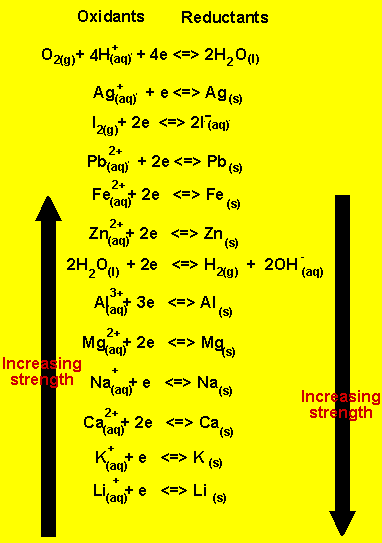Electrolysis
in solutions exercises solution 4
Students should be aware that oxidation (the loss of electrons) occurs at the anode and reduction (the gain of electrons) occurs at the cathode.
4) A solution containing
a mixture of lead nitrate, magnesium nitrate and silver nitrate was
electrolysed. The potential difference across the electrodes was maintained
for a long time until bubbles appeared at both electrodes.
a) Predict the products and
the order in which they were formed at the anode and the cathode.
b) Give equations for each reaction that took place.
The strongest oxidant and the strongest reductant present will react. The oxidants present are lead (II) ions, Mg(II) ions, Ag ions and water. The only reductant present is water.
So the strongest oxidant is Ag ions will be deposited first followed by lead. Then water will be reduced at the cathode according to the equation below.
2H2O(l) + 2e =>H2(g) + 2OH-(aq)
Magnesium will never be deposited as long as water remains.
At the anode water is oxidised according to the equation below.
2H2O(l) => O2(g) + 4H+(aq) + 4e
